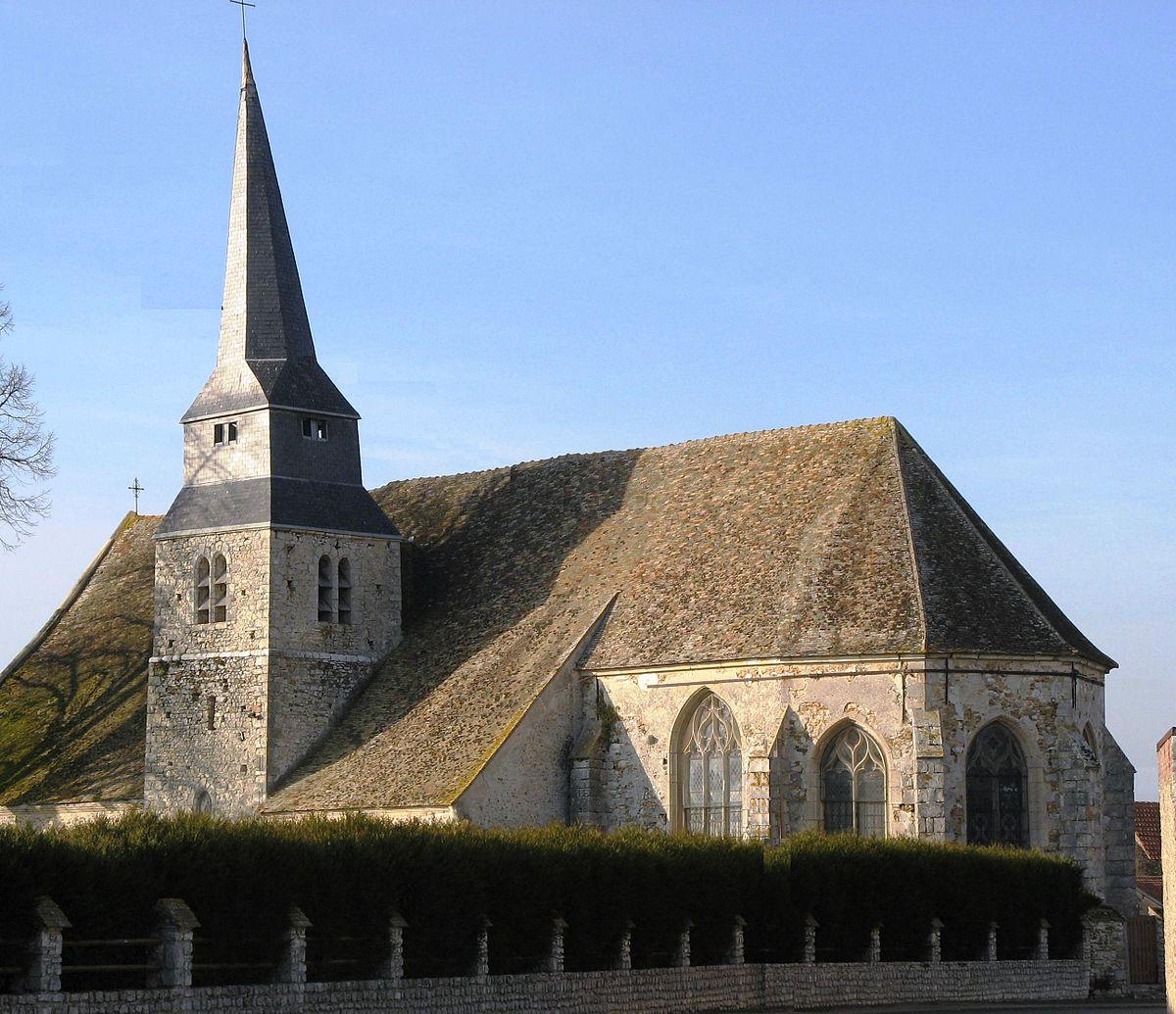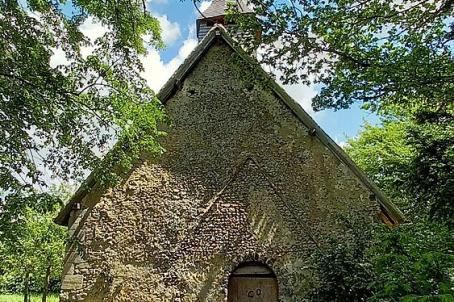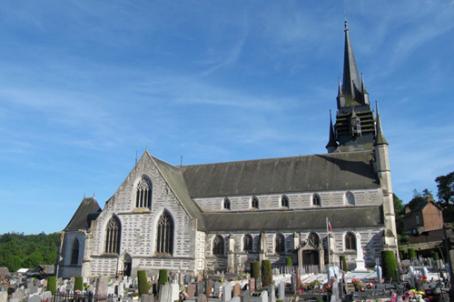Church of Saint-Ouen de Rubremont
Given to the Abbey of Lyre in the eleventh century, the pre-Romanesque church was a simple building in the twelfth and thirteenth centuries, with a single nave extended by a slightly narrower long choir vault. In 1792, the church Saint-Ouen de Rubremont, became "the public room of the common house" - then a barn that passed into the hands of several owners. It was only in 2010 and with the creation of a local association that the church was restored.
About this building
In the heart of the countryside of Ouche in Normandy and the old rural village of Rubremont stands the small pre-Romanesque church Saint Ouen. Dedicated to the great Norman saint, Saint Ouen (who died in 686), the church was donated in the 11th century to the Abbey of Lyre by Adelyse de Tosny, cousin-in-law of William the Conqueror.
In the twelfth and thirteenth centuries, the church was a simple building: its single nave (with vault of fir wood) was extended by a slightly narrower, long choir.
One of the peculiarities of this church comes from the fact that the wood paneling, on which we can see traces of geometric designs, does not rest on the walls but on independent pillars. The second peculiarity of the church is the large sandstone blocks that serve as the seat of the main corners of the building; stones that extend well beyond the bare wall.
In 1792, with the Sainte-Eugénie Church of Bosc-Renoult-en-Ouche becoming the only parish church, the church of Saint-Ouen de Rubremont, which had lost its bell tower and g its caquetoire, became "the public room of the common house" – at the time a barn that was passed into the hands of several local owners.
It wasn’t until 2010, and the creation of a local organisation for the safeguarding of the old church Saint-Ouen of Rubremont that the church, and its 1000 years of association with the local Norman history was available to the public once again.






